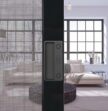Treadmill Showdown: Your Ultimate Guide to Folding and Non-Folding Treadmills
Contents
There’s no doubt about it—home workouts are booming, and treadmills are leading the charge. Whether you’re chasing that runner’s high, looking to stay fit between work calls, or just trying to outpace your step-counting smartwatch, adding a treadmill to your home gym is a smart move. But before you click “add to cart,” there’s one question that stumps many first-time buyers: Should you go for a folding or a non-folding treadmill?
Understanding the Basics

source: source: flexequipment.com.au
If you’re browsing for sale treadmills that deliver reliable performance, chances are you’re comparing not just price tags but also the bells and whistles that come with each machine. From heart rate sensors to incline settings, there’s a surprising range of features packed into both folding and non-folding treadmills, though they do differ in key areas.
Folding Treadmills
As the name suggests, folding treadmills are designed to fold up, usually by lifting the running deck vertically, making them perfect for smaller spaces. These machines are engineered with convenience in mind, offering the ability to store them away when not in use. Many modern folding treadmills come equipped with hydraulic lift systems, wheels for portability, and a decent range of tech features.
Non-Folding Treadmills
Non-folding treadmills are the fixed-frame, heavy-duty alternative. They don’t pack up and roll under the bed—they’re here to stay. You’ll typically find these in commercial gyms, but many serious home users swear by them for their solid construction and premium features. With a focus on stability and performance, these machines often cater to runners, athletes, and fitness enthusiasts who need their equipment to go the distance.
Space and Storage Considerations

source: source: flexequipment.com.au
Ah, the age-old problem of space. Whether you live in a cosy flat or a suburban sprawl, space is always a factor.
Folding Treadmills: The Compact Choice
If you’re short on space, a folding treadmill might just be your best friend. These machines are ideal for apartments, shared spaces, or multipurpose rooms. After your workout, simply fold it up and tuck it against a wall or in a corner. Some models can even be stored upright in a cupboard or under the bed.
Non-Folding Treadmills: Set It and Forget It
Non-folding treadmills, on the other hand, demand a more permanent setup. They’re typically bulkier and heavier, and moving them around isn’t as easy. But if you’ve got a dedicated home gym or a spacious garage, the extra size might not be a deal-breaker—in fact, it might make your gym feel more “pro.”
Durability and Stability

source: source: flexequipment.com.au
When you’re pounding the belt at full speed, the last thing you want is a wobbly machine.
Folding Treadmills: Lightweight but Functional
While modern folding treadmills have come a long way, they can’t quite match the rock-solid feel of a non-folding model. Their frames are generally lighter, which makes them easier to move, but also slightly less stable during high-intensity runs. They’re perfectly fine for walking, jogging, and light running, but may not be ideal for larger users or marathon-level workouts.
Non-Folding Treadmills: Built Like a Tank
Non-folding treadmills are designed for endurance. Their heavier frames reduce vibration and provide a sturdier, more grounded feel. These machines can handle intense sprints, interval training, and heavier body weights with ease. If you’re training for a race or enjoy pushing your limits, this is the kind of build quality you’ll appreciate.
Performance, Features & Price Value
It’s time to talk about what’s under the hood—and what you get for your money.
Folding Treadmills: Budget-Friendly and Feature-Rich
Contrary to popular belief, folding treadmills aren’t lacking in features. Many come with LCD screens, built-in workout programs, heart rate monitors, and Bluetooth connectivity. However, they often have smaller motors and shorter running decks, which might not suit taller users or hardcore runners. On the upside, they tend to be more affordable, making them an excellent option for beginners or casual users looking for treadmills without breaking the bank.
Non-Folding Treadmills: Premium Power and Performance
Non-folding treadmills usually offer longer decks, stronger motors, and more advanced features like custom interval programs, higher incline ranges, and interactive displays. With that boost in performance comes a higher price tag—but for those who train regularly or require serious reliability, it’s money well spent.
Who Should Buy What?
Let’s break it down based on your needs and lifestyle.
Folding Treadmills Are Best For:
- People living in smaller homes or apartments
- Casual users, walkers, and light joggers
- Budget-conscious buyers
- Anyone who needs to store their equipment between uses
Non-Folding Treadmills Are Best For:
- Runners, athletes, and fitness enthusiasts
- Households with a dedicated home gym
- Users over 6 ft or those with longer strides
- People prioritising stability and long-term durability
Finishing Thoughts
So, what is the difference between folding and non-folding treadmills? In short: space, stability, and performance.
Folding treadmills are compact, cost-effective, and ideal for casual use in smaller spaces. They offer convenience without sacrificing too much on features, making them a top choice for everyday home fitness.
Non-folding treadmills are the go-to for users seeking maximum durability, advanced features, and a solid, gym-quality feel. They’re an investment in serious performance if you’ve got the space for one.
At the end of the day, the best choice depends on your available space, fitness level, budget, and personal goals. Whichever side you land on, there are excellent for sale treadmills available to match your needs and get you moving in the right direction.






